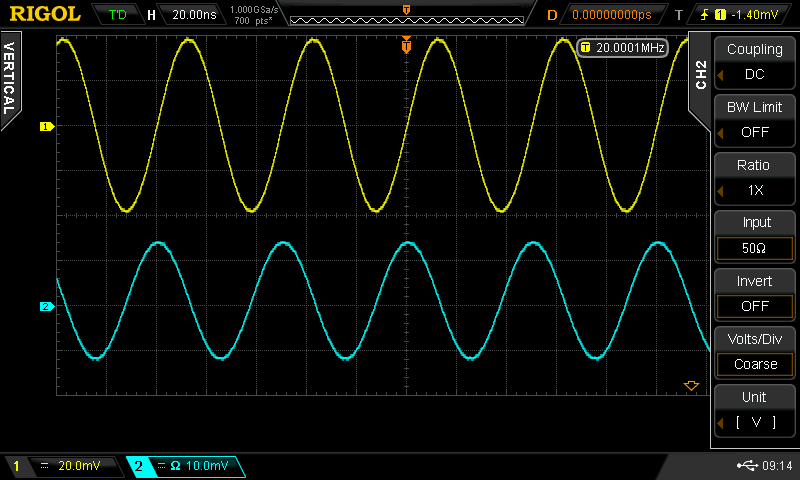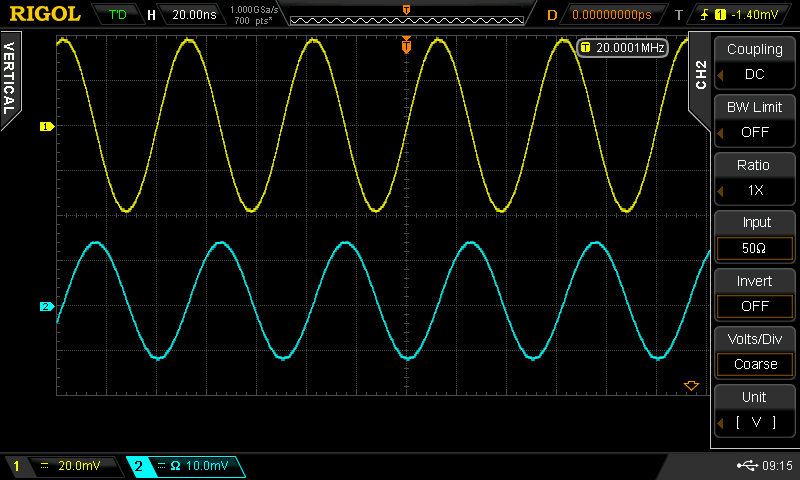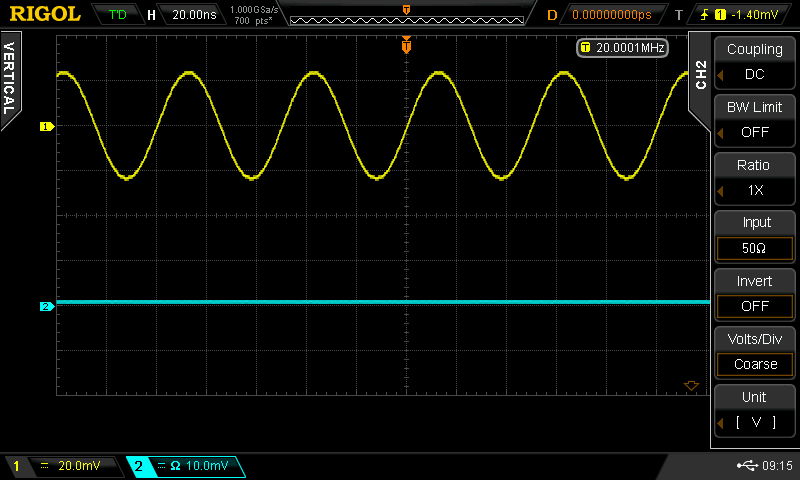I populated the PCB this evening. After re-seating the CP2102 with a little hot-air, it actually works. Somehow the QFN package is a little finicky. Maybe my PCB footprint is bad? Anyway, here it is, before I solder the tin shield over the RF section:

I tested the USB connection on an old PC and through a lousy old USB hub that I don't care about. Just in case. But nothing got fried :-(
Since the bias for the mixer diodes comes from the signal levels on the RTS and DTR lines, I didn't even have to write any software to test it. I fired up gtkterm and used F7/F8 to toggle the control lines. With DTR high and RTS low, the RF output is in-phase, while with DTR low and RTS high, the output is inverted, giving a 180-degree phase shift. Or, maybe it's the other way around - it doesn't really matter for my purposes.
So far, I just tested it with the output of the DDS I happened to have on the bench at the time. The 20 MHz output I used doesn't say much about the performance near 1 GHz, but at least the basics work. Here's the input (yellow) and output (cyan) with the switch in one position:

and in the opposite:

There's a nice 180-degree shift between the two.
Although I don't need it for my application, you can also disable the output by setting DTR and RTS to the same value (although I suspect setting them both low might be best). Here's what that looks like:

I don't know how much attenuation you really get in this case, but I'm not using it for anything anyway.
 Ted Yapo
Ted Yapo
Discussions
Become a Hackaday.io Member
Create an account to leave a comment. Already have an account? Log In.
Why are you frowning because nothing got fried?
Are you sure? yes | no
It was kind of a let down, because I was ready. I spent 15 minutes finding the oldest, beat-up, good-for-nothing USB hub I had and installing gtkterm on a PC I don't care about. Then, I hooked the thing up and ... it worked.
No smoke, sparks, or nothin :-)
But, I just know if I had plugged it into my everyday desktop the first time, I would have busted a port on the motherboard - because Murphy's law. There would have been a little solder bridge between the Vbus line and ground - because when you plug into hardware you care about, there always is.
Are you sure? yes | no